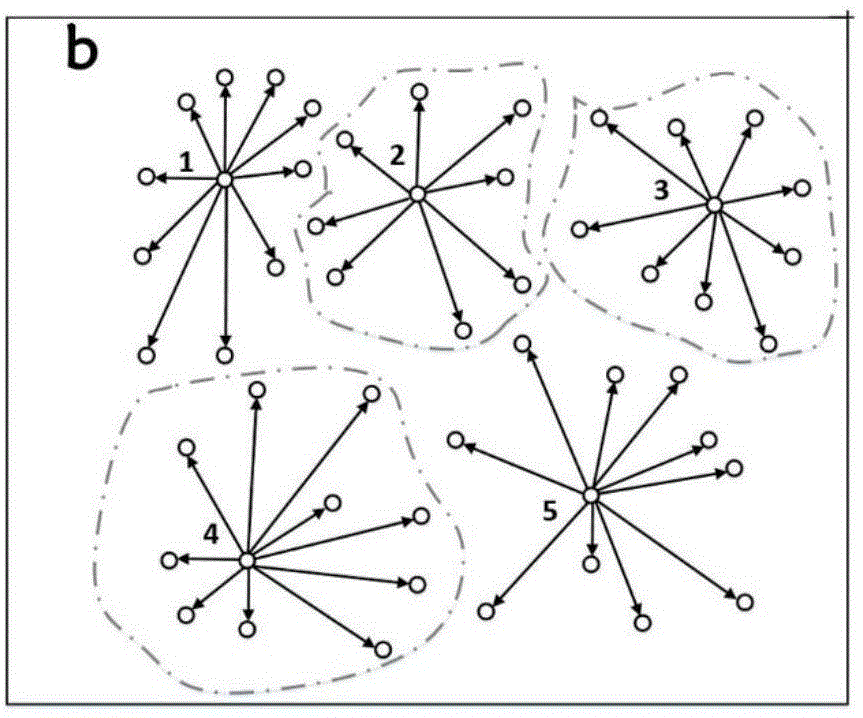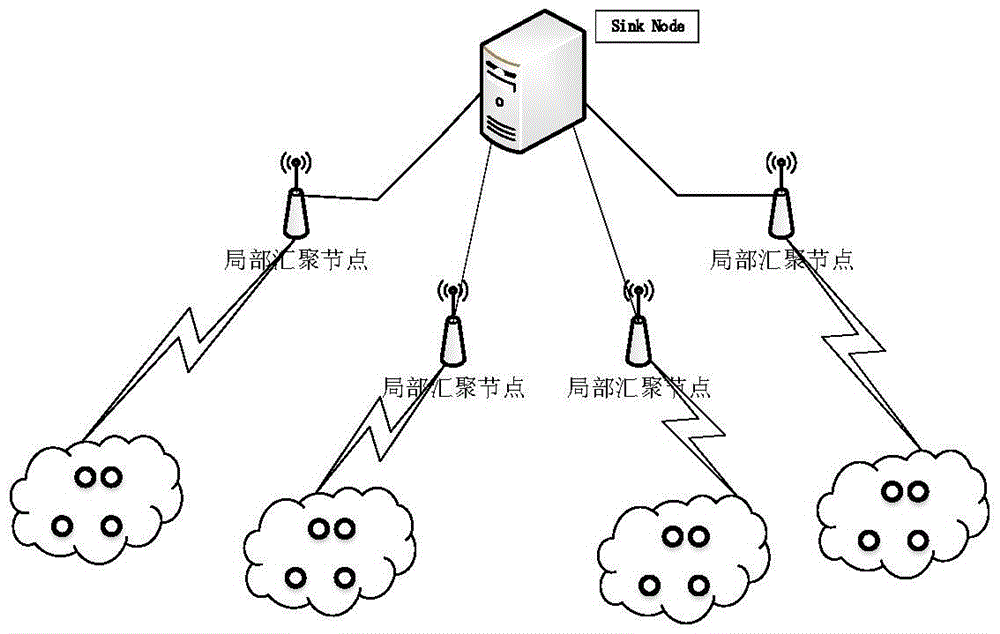Spatio-temporal clustering method for compressive data gathering
A space-time correlation and wireless sensor technology, applied in network topology, wireless communication, data exchange network, etc., can solve problems such as multi-observation times, increased data transmission times, and reduced network life
- Summary
- Abstract
- Description
- Claims
- Application Information
AI Technical Summary
Problems solved by technology
Method used
Image
Examples
Embodiment Construction
[0051] See Figure 1a-Figure 5 , a wireless sensor network compressed data collection method based on spatio-temporal correlation clustering proposed by the present invention, the present invention will be described in detail below in conjunction with specific implementation methods.
[0052] Firstly, the network model of the present invention is introduced. When the network scale is large and the nodes are distributed in a large range, we can layer the network and establish a local fusion center. like figure 2 As shown, the network is divided into several sub-networks, each sub-network has its own local aggregation node, and finally each local aggregation node directly transmits the data to the sink center of the network. Here we consider the data collection of a single partial network, and make the following assumptions for a single partial network:
[0053] (1) The nodes are all isomorphic, that is, the nodes have the same communication capability and initial energy;
...
PUM
 Login to View More
Login to View More Abstract
Description
Claims
Application Information
 Login to View More
Login to View More - R&D
- Intellectual Property
- Life Sciences
- Materials
- Tech Scout
- Unparalleled Data Quality
- Higher Quality Content
- 60% Fewer Hallucinations
Browse by: Latest US Patents, China's latest patents, Technical Efficacy Thesaurus, Application Domain, Technology Topic, Popular Technical Reports.
© 2025 PatSnap. All rights reserved.Legal|Privacy policy|Modern Slavery Act Transparency Statement|Sitemap|About US| Contact US: help@patsnap.com



